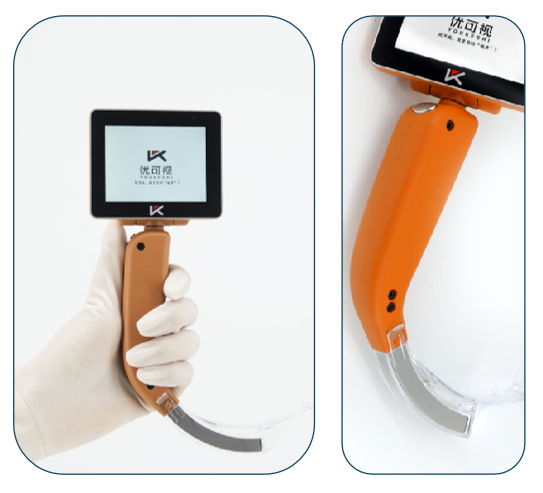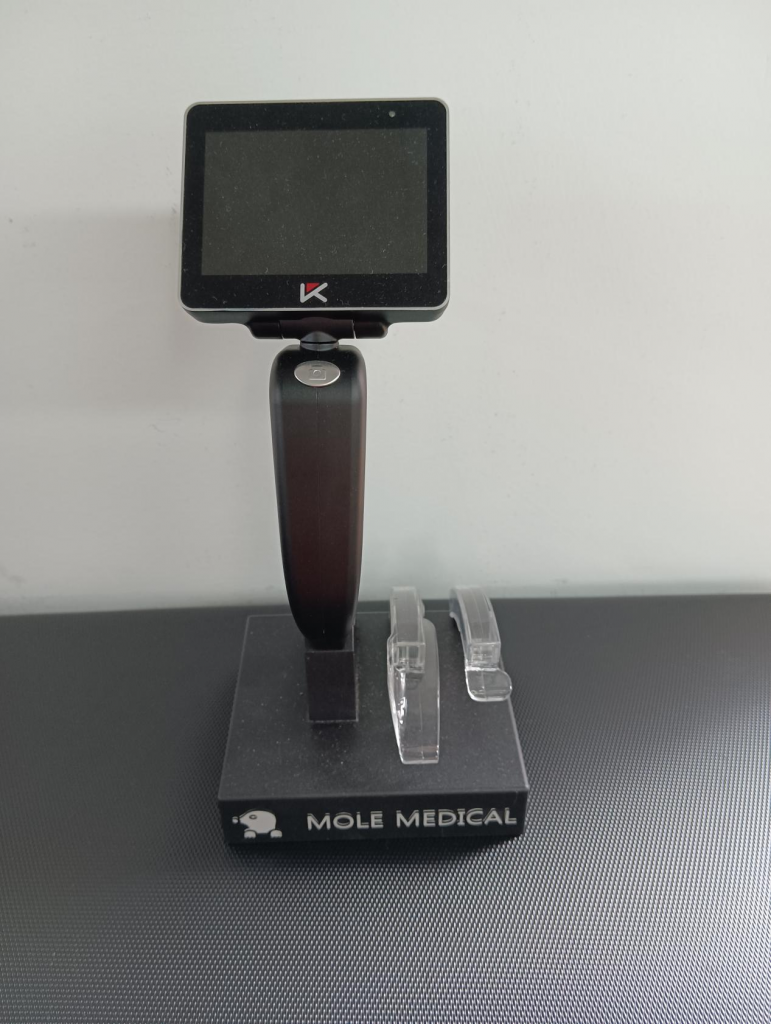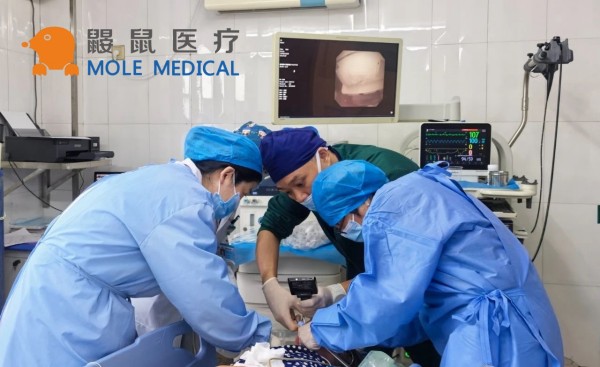Advanced Video Intubation Laryngoscope Guide
Dec 23, 2023
Video Intubation Laryngoscopes are innovative medical devices that enhance patient safety and improve outcomes during intubation procedures. These devices offer improved visualization, making it easier for healthcare providers to navigate patients’ airways accurately. They have become a staple in modern operating rooms, emergency departments, and intensive care units.
In this guide, we will explore the different types of video laryngoscopes available, their features, and benefits. We will also provide tips from experts on the best practices for using these advanced intubation devices. So, keep reading to stay informed on the latest advancements in Video Intubation Laryngoscopes.
Key Takeaways:
- Video Intubation Laryngoscopes enhance patient safety and improve intubation procedure outcomes
- These devices offer improved visualization and navigation of patients’ airways
- Video Laryngoscopes have become a standard medical tool in modern operating rooms, emergency departments, and intensive care units
- Expert tips and recommendations can help healthcare providers achieve optimal outcomes when using Video Intubation Laryngoscopes
- Stay informed on the latest advancements in Video Intubation Laryngoscopes to improve patient outcomes and safety
Understanding Video Laryngoscopes
Video laryngoscopy is a technique used for endotracheal intubation, either in emergency or routine situations. This advanced method involves the use of a special laryngoscope with an attached camera that captures images of the patient’s airway for optimal visualization.
Video laryngoscopes offer many advantages over traditional laryngoscopes. They provide a better view of the larynx, making it easier to guide the endotracheal tube into the trachea. This is especially useful in patients with difficult airways, obesity, or limited neck mobility. Additionally, video laryngoscopes are less likely to cause trauma to the airway, reducing the risk of complications during intubation procedures.
There are many different types of video laryngoscopes available in the market. Some have a blade shape more similar to traditional laryngoscopes, while others have a more unconventional shape. The most important factor to consider when choosing a video laryngoscope is the purpose of the intubation and the patient’s specific anatomical needs.
Video-assisted intubation provides a safer and more effective alternative to traditional laryngoscopy. The use of video technology allows healthcare professionals to accurately visualize the airway and properly place the endotracheal tube. Overall, video laryngoscopes have revolutionized the field of airway management and are increasingly becoming the preferred method for endotracheal intubation.
Features and Advancements in Video Intubation Laryngoscopes
Video intubation laryngoscopes are advancing at an incredible pace. With improvements in technology and design, these devices are increasingly becoming the preferred choice of healthcare professionals for airway management.
One of the significant innovations in modern video intubation laryngoscopes is the high-definition camera and screen display that offers crystal-clear visualization. This feature is especially important when intubation is challenging due to anatomical variations or other factors.
Additionally, several models of video laryngoscopes come with curved or angulated blades that provide optimal alignment, less interference with soft tissues, and superior access to the glottis. Newer models also offer better video recording capabilities for educational or quality assurance purposes.
Another key feature in advanced video intubation laryngoscopes is the ease of use and portability. Some models come with wireless connectivity, making them ideal for emergency medical services or rapid response units. The lightweight and compact nature of these devices makes them easy to carry and maneuver even in tight spaces.
Finally, several manufacturers of video laryngoscopes are incorporating training modules in their devices. Healthcare professionals can improve their intubation skills using these modules, allowing them to achieve better outcomes in real-life situations.
The Benefits of Advanced Intubation Devices

With their advanced features, contemporary video intubation laryngoscopes are revolutionizing airway management. Their benefits include:
- Improved visualization during difficult airway scenarios
- Reduced time to intubate
- Increased success rates
- Decreased risk of complications
- Enhanced medical education and training for healthcare professionals
These benefits underscore the importance of advanced video intubation laryngoscopes in critical airway management.
Expert Reviews and Tips for Video Intubation Laryngoscopes
Healthcare professionals seeking optimal outcomes during intubation procedures can benefit from expert reviews and best practices for using video intubation laryngoscopes. Experts recommend selecting devices that provide high-definition visualization, intuitive controls, and adjustable lighting. Moreover, healthcare providers should prioritize training and education to ensure safe and effective use of these devices.
Experts suggest using video laryngoscopes for intubation in specific scenarios, such as limited airway access or difficult intubation patients. Healthcare professionals should also consider selecting devices that offer not only benefits for adult patients, but also neonates and pediatrics.
Based on real-world experiences, healthcare providers can increase success rates by modifying selected techniques when necessary, such as optimizing patient positioning and using a bougie as an adjunct to the scope. Additionally, some quotes from professionals in the field provide insights into handling complications during the intubation process, emphasizing the importance of preparedness and mitigating potential risks.
Design and Components
A typical video intubation laryngoscope consists of a handle, a blade with a built-in camera, and a display monitor. The blade, which is inserted into the patient’s mouth, is equipped with a camera and a light source to illuminate the airway. The images captured by the camera are then displayed in real-time on the monitor, providing a clear view of the larynx and surrounding structures.
Advantages Over Traditional Laryngoscopy
The primary advantage of video intubation laryngoscopes over traditional laryngoscopes is the enhanced visualization of the airway. This improved view can significantly reduce the risk of trauma to the airway structures during intubation. Additionally, it allows for intubation in patients with difficult airways, such as those with limited neck mobility, obesity, or airway deformities.
Clinical Applications
Video intubation laryngoscopes are widely used in various medical settings, including operating rooms, emergency departments, intensive care units, and during pre-hospital care. They are particularly valuable in managing difficult airways, performing rapid sequence intubations in emergency situations, and teaching intubation techniques to medical students and residents.
Training and Skill Development
The use of video laryngoscopes requires specific training and practice. While the technique offers a better view of the airway, it also requires a different hand-eye coordination compared to traditional laryngoscopy. Training programs and simulation-based learning can help healthcare professionals acquire the necessary skills for effective use of this technology.
Technological Advancements
Recent advancements in video laryngoscopy include the development of portable and disposable models, improved image quality, and integration with other digital technologies. Some devices now offer recording capabilities, which can be useful for educational purposes and for reviewing difficult cases.
Challenges and Limitations
Despite its advantages, video intubation laryngoscopy has some limitations. The equipment is generally more expensive than traditional laryngoscopes, which can be a barrier in resource-limited settings. Additionally, the reliance on technology means that there is a risk of equipment failure, and users must be prepared to switch to traditional methods if needed.
Future Directions
The future of video intubation laryngoscopy looks promising, with ongoing research and development aimed at enhancing its functionality and accessibility. Innovations may include better integration with other medical devices, advancements in imaging technology, and the development of more cost-effective models.
Conclusion
As the medical field continues to advance, video intubation laryngoscopes have become a critical tool for healthcare professionals. Through our guide, we have explored the benefits and advancements in these devices, highlighting their ability to enhance visualization and improve success rates during intubation procedures.
It is evident that video intubation laryngoscope have significantly improved patient safety and efficiency during intubation procedures. Healthcare professionals must continue to incorporate these devices into their practices to achieve optimal outcomes.
As technology continues to evolve, we can expect to see further improvements and advancements in video intubation laryngoscopes. It is crucial for healthcare professionals to stay informed and up-to-date with the latest developments to provide the best care possible.
In conclusion, video intubation laryngoscope play a crucial role in the medical field and have become an essential tool for healthcare professionals. The advanced features and benefits of these devices make them vital in improving patient outcomes and ensuring optimal results during intubation procedures.
Categories
Latest Articles

Disposable Nephroscopes: Redefining Safety & Efficiency in Urology
Introduction The shift towards minimally invasive urological surgery has found a pivotal ally: the disposable nephroscope. As traditional reusable scopes grapple with persistent biofilm contamination risks and soaring sterilization costs, the global medical community is rapidly adopting single-use solutions. This article analyzes the clinical value, technological evolution, and dynamic innovation landscape driving this transformative shift. ... Read more

Disposable Video Laryngoscope Blades: The Ultimate Solution for Preventing Cross-Contamination
In the operating room, as the cold light of a video laryngoscope illuminates a patient’s airway, an age-old medical challenge is being redefined: How can life-saving instruments avoid becoming vectors of infection? Jiangsu MoleMedical drives an innovative safety revolution—replacing reusable devices with single-use, sterile laryngoscope blades that create a pure barrier for critical airways. Traditional video ... Read more
-2.jpg)
FDA & CE Approved Video Laryngoscope: What Makes It Stand Out?
Introduction In high-pressure emergencies and precision-driven operating rooms, video laryngoscopy is revolutionizing airway management. Mole Medical’s FDA and CE-certified technology replaces tactile-dependent “blind intubation” with real-time visual navigation – enhancing safety, accuracy, and clinical outcomes worldwide. Why Certification Matters Mole Medical’s dual certifications validate its global compliance and performance: FDA Clearance: Rigorous validation of safety/efficacy ... Read more

Mole Medical Showcases Advanced Endoscopy Solutions at CMEF Autumn 2025, Driving Global Partnerships
Guangzhou, China – September 26-29, 2025 – The 92nd China International Medical Equipment Fair (CMEF Autumn) concluded successfully on September 29th at the Canton Fair Complex in Guangzhou. Mole Medical Technology Co., Ltd. (Mole Medical) made a significant impact at the event, drawing global medical professionals and partners to its booth (Hall 2.1, Stand Q24) ... Read more

How to Use Disposable Ureteroscopes Safely and Efficiently
In the field of urology, the application of disposable electronic ureteral-kidney pelvis endoscopy catheters is leading the technological innovation in minimally invasive surgeries. According to the 2024 multi-center research data from China’s urology department, among the over 5,000 surgeries included, the patient group using disposable catheters performed significantly better in key indicators such as operation ... Read more



